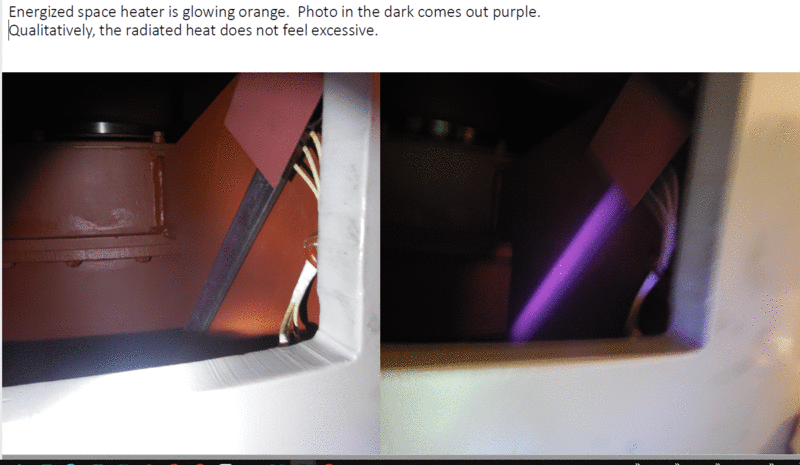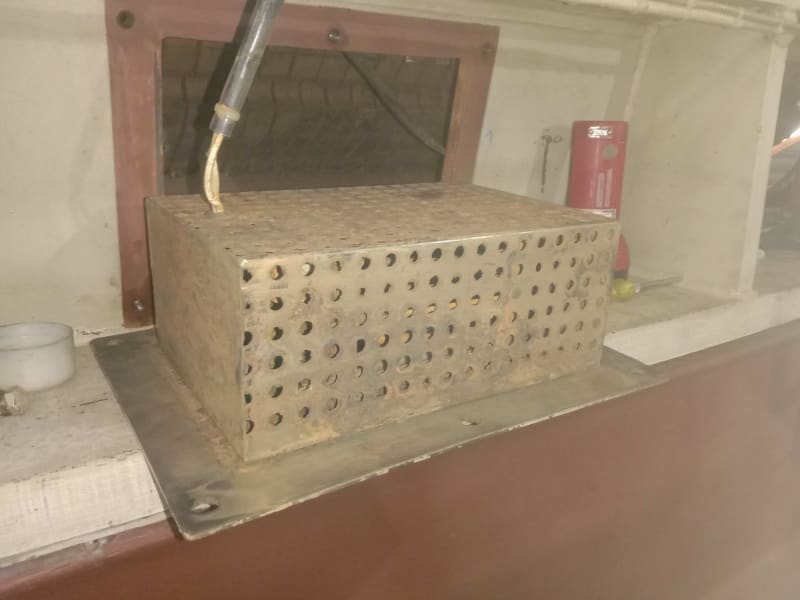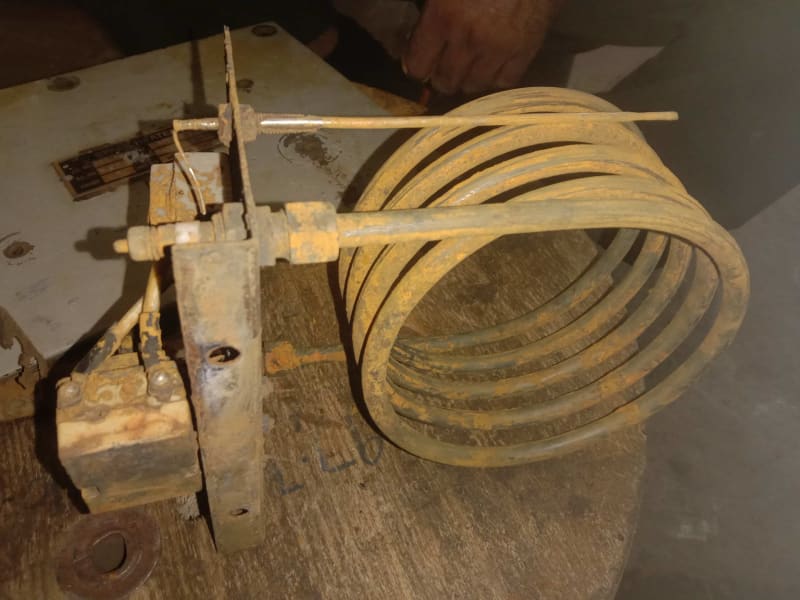electricpete
Electrical
We have an 8000hp vertical motor with six 480 volt 500w heaters (3000w total) in the lower bearing bracket area.
The current measures 3.5A in each leg as expected.
However the heaters are visibly glowing dark orange. I tried to take a picture and they came out more purple looking (both images are normal camera, NOT infrared camera).
Have you seen this before? Would you consider it normal / expected? Is it safe considering there is a nearby oil reservoir. (Google tells me things shouldn't visibly glow until they get to 900 degrees F).

=====================================
(2B)+(2B)' ?
The current measures 3.5A in each leg as expected.
However the heaters are visibly glowing dark orange. I tried to take a picture and they came out more purple looking (both images are normal camera, NOT infrared camera).
Have you seen this before? Would you consider it normal / expected? Is it safe considering there is a nearby oil reservoir. (Google tells me things shouldn't visibly glow until they get to 900 degrees F).

=====================================
(2B)+(2B)' ?




